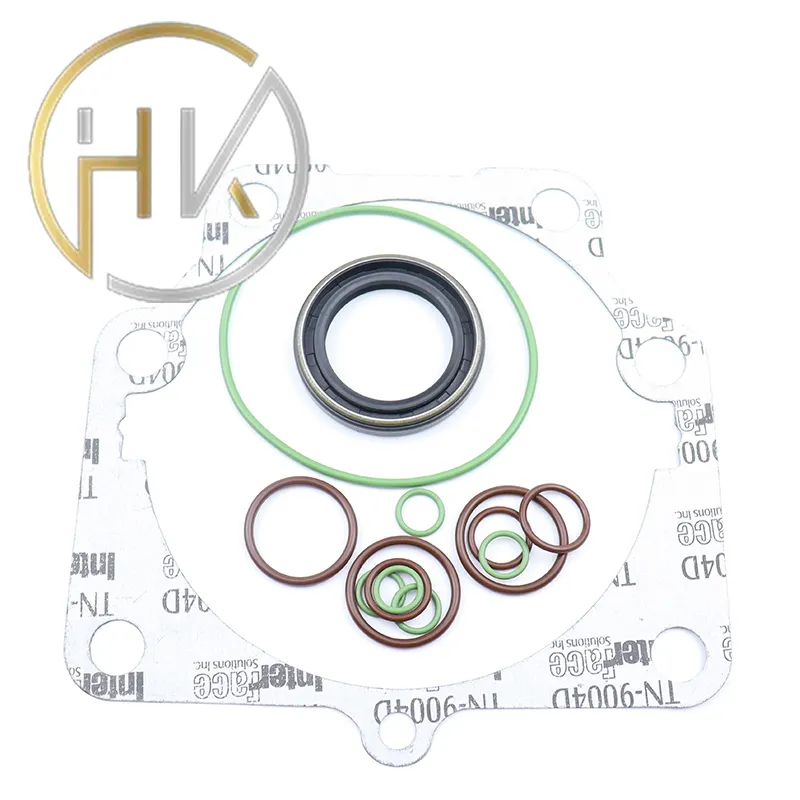Nov . 26, 2024 06:28 Back to list
Understanding Gearbox Oil Seals and Their Importance in Vehicle Maintenance
Understanding Gearbox Oil Seals Function, Importance, and Maintenance
Gearbox oil seals play a crucial role in ensuring the efficient operation of various machinery, particularly in automotive and industrial applications. These components are designed to prevent the leakage of lubricants while keeping contaminants out of the gearbox, ultimately ensuring smooth gear operation and extending the lifespan of the equipment.
What is a Gearbox Oil Seal?
A gearbox oil seal is a mechanical component that provides a barrier between the moving parts of the gearbox and the external environment. Typically made from rubber, elastomers, or synthetic materials, these seals are engineered to withstand various operational stresses, including temperature fluctuations, pressure changes, and exposure to chemicals. They are placed at the junctions of the gearbox housing and the rotating shafts to minimize oil leakage and to prevent dirt, dust, and debris from entering the gearbox mechanism.
Importance of Gearbox Oil Seals
The significance of gearbox oil seals cannot be overstated. They serve several key functions
1. Leak Prevention The primary purpose of an oil seal is to prevent the loss of lubricant. A significant loss of gearbox oil can lead to inadequate lubrication, resulting in increased friction and heat, which can ultimately cause gear failure.
2. Contamination Control Oil seals also function as a barrier against contaminants. Dirt, debris, and moisture can severely impact the internal components of a gearbox, leading to corrosion and wear. By sealing off the internal environment, these seals help maintain the purity of the lubricant and the integrity of the gearbox.
gear box oil seal

3. Enhanced Performance Properly functioning oil seals contribute to the overall performance of machinery. When gears are adequately lubricated and free from contaminants, they can operate more smoothly and efficiently. This translates to better fuel economy in vehicles and improved productivity in industrial machinery.
4. Cost Savings By preventing oil leaks and contamination, gearbox oil seals can help save money in the long run. Reduced maintenance costs, fewer repairs, and longer intervals between servicing are all benefits of maintaining effective seals.
Maintenance and Replacement
To ensure that gearbox oil seals perform efficiently, regular maintenance checks should be conducted. Signs of a failing oil seal can include oil stains around the gearbox, unusual noises from the gearbox area, or decreased performance. If these symptoms are observed, it's essential to address the issue promptly.
When replacing oil seals, it's crucial to select the right type compatible with the specific gearbox. Manufacturers often provide specifications regarding the type of material and seal design suitable for their machines. Installing the correct seal ensures a proper fit and optimal performance.
During installation, care should be taken not to damage the seal or the sealing surfaces. Proper alignment and the use of appropriate tools can prevent damage that could lead to further issues down the line.
Conclusion
In summary, gearbox oil seals are vital components that protect against oil leaks and contamination, significantly affecting machinery performance and longevity. Regular maintenance and timely replacement are essential to ensure these seals function effectively. By understanding the importance of gearbox oil seals, operators can safeguard their equipment and maintain efficient operations, ultimately leading to better performance and reduced costs.
-
TCN Oil Seal Metal Ring Reinforcement for Heavy Machinery
NewsJul.25,2025
-
Rotary Lip Seal Spring-Loaded Design for High-Speed Applications
NewsJul.25,2025
-
Hydraulic Cylinder Seals Polyurethane Material for High-Impact Jobs
NewsJul.25,2025
-
High Pressure Oil Seal Polyurethane Coating Wear Resistance
NewsJul.25,2025
-
Dust Proof Seal Double Lip Design for Construction Equipment
NewsJul.25,2025
-
Hub Seal Polyurethane Wear Resistance in Agricultural Vehicles
NewsJul.25,2025
-
The Trans-formative Journey of Wheel Hub Oil Seals
NewsJun.06,2025
Products categories
















